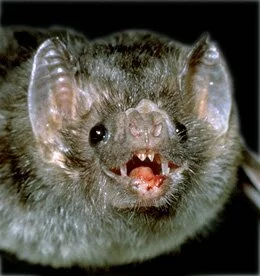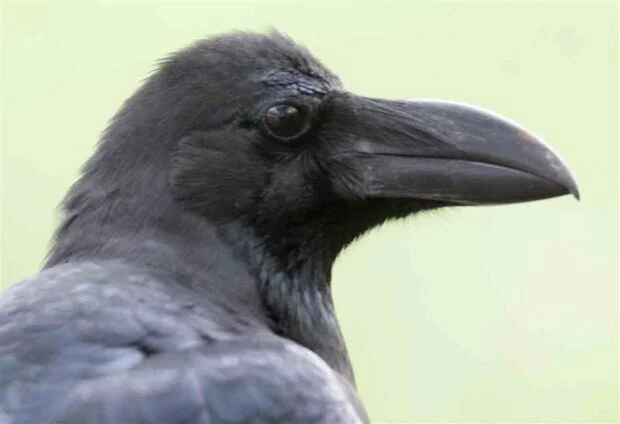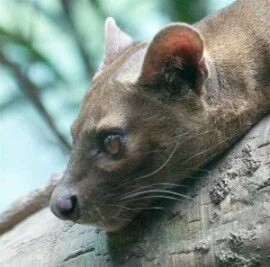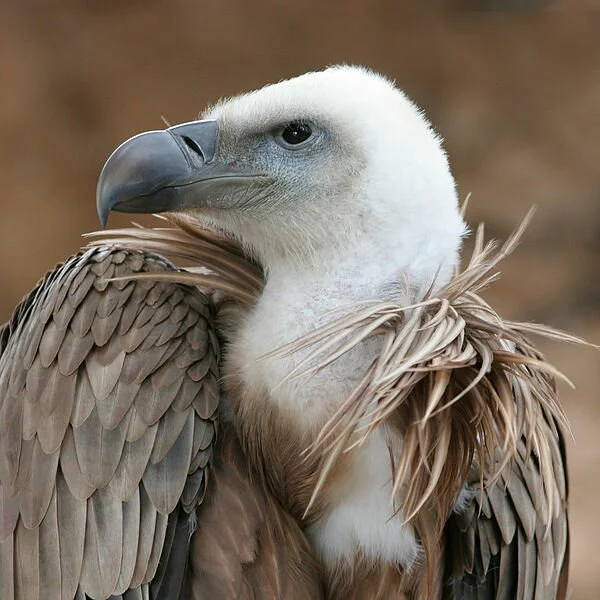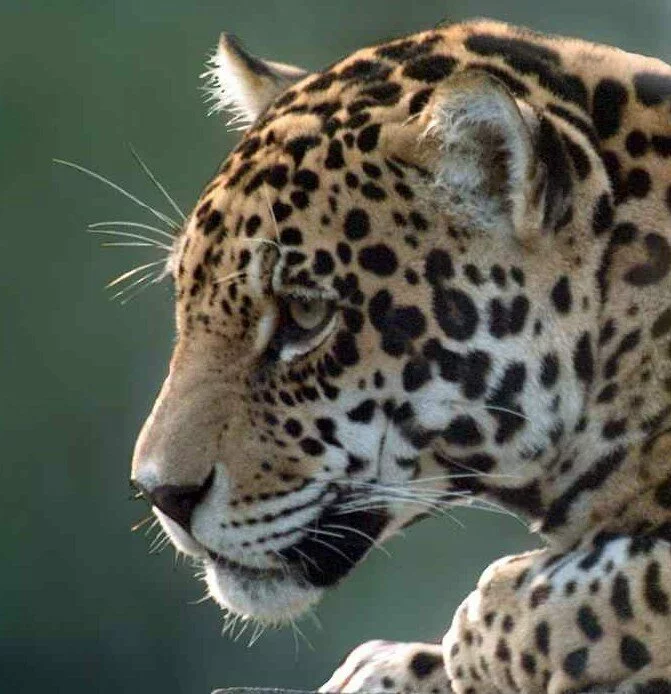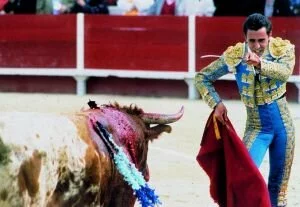Commonly associated with Halloween, misfortune, witches, horror movies, and the devil, the infamous vampire bats have been at the center of ominous folklore for centuries. Then again, with their intimidating design, purely nocturnal lifestyle, and diet consisting solely of blood, it is not difficult to see how these unique animals received their unattractive reputation. And yet, though the images and concepts vampire bats represent throughout different cultures are interesting, the science and finesse behind their design is far more extraordinary. Few truly understand or appreciate the behavior and biology of these winged, rodent-like mammals. From their masterful use of echolocation to their ability to survive purely on the blood of their unsuspecting prey, there is much more to the vampire bat than simply scares. Indeed, these bizarre creatures can be fascinating to those who observe and study them as the special animals that they are.
It may come as a surprise that only three species of bats are truly hematophagous, meaning they only feed on blood.[1] These are the common vampire bat (Desmodus rotundus), the hairy-legged vampire bat (Diphylla ecaudata), and the white winged vampire bat (Diaemus youngi). Of the three species, the common vampire bat is the most widespread as well as the most studied.[2] Due to its greater range, it may also have been the most influential in the development of the three species’ reputations throughout different cultures. As a result, this article will focus on the lifestyle and design of Desmodus rotundus, while mentioning its other relatives whenever information applies to them as well.
Bats are popular symbols of Halloween, horror, and other similar concepts. Photograph Source: biogeodb.stri.si.edu
Despite the way they are portrayed in many horror movies, the common vampire bat (as well as its relatives) is a rather small animal. Its body is generally about 3.5 inches in length and weight usually does not exceed 2 ounces (although it can temporarily double after the animal gorges itself on blood), while its wingspan reaches up to 7 inches in length.[3] This species possesses grayish-brown fur which is lighter on the animal’s ventral side. The common vampire bat does not possess a tail, and the membrane between its hind legs (known as the uropatagium) is more reduced than in other bats. The species is sexually dimorphic, with females being larger than males. These vampire bats are highly adapted for their lifestyle, possessing large braincases, reduced rostrums which accommodate their large razor-sharp incisors and canines, and two lateral grooves in the tongue that expand and contract as the small hunter feasts on blood. Large eyes and an acute sense of smell also aid the bat in its search for food. The bat’s limbs are also specially designed, with long, well-developed thumbs on their wings and powerful hind legs assisting them as they move on the ground.[4]
Vampire bats possess specialized limbs which allow them a surprising level of mobility on the ground. Photograph Source: Houston Zoo, Inc.
The common vampire bat’s natural distribution is quite generous, with the species occurring from northern Mexico to central Chile, Argentina, and Uruguay. These bats also appear on the islands of Trinidad and Margarita off Northern Venezuela.[5] They are limited to warmer climates, and occur in both arid and humid parts of their tropical and subtropical range. Being nocturnal animals, common vampire bats spend the daytime hidden in darker areas. Common roosting areas include moderately lighted caves with deep fissures and tree hollows. However, these bats are not picky when it comes to a temporary roosting spot; they will comfortably accept old wells, mine shafts, and even abandoned buildings. They spend their time in these roosting areas with their colonies, which can range anywhere from 20 to 5000 bats. It should be noted that the roosting areas of these animals often smell strongly of ammonia, which is due to the digested blood that collects on the crevices and on the floors of the roosts.[6]
One may be left wondering why vampire bats are designed for a hematophagous lifestyle. Is it really worthwhile to subsist on a challenging diet of nothing but blood? Despite the difficulties of attaining this food for a fragile creature such as the vampire bat, blood is actually an ideal food. Within the bodies of all vertebrates, blood is the central ingredient for the circulatory system. It flows in vessels, distributing food and oxygen through the body and collecting wastes for removal. Blood consists of water-like plasma, chemicals, red blood cells, and white blood cells. It is these blood cells which represent the nutritious part of the blood. Keeping blood in arteries, vessels, veins, and capillaries ensures that it flows efficiently. The systems that protect the body’s blood illustrate its importance to animals. From clotting to vein constriction, a variety of mechanisms exist which keep an animal from bleeding to death through a small wound. Best of all, blood is a renewable resource, as it is constantly manufactured in the body, ensuring that vampire bats will never encounter a shortage of their precious and complete food. This is good, considering the fact that all three vampire bat species require two tablespoons of blood every day.[7]
The common vampire bat survives on nothing except blood. Other bats, such as this Malayan flying fox, possess a more herbivorous lifestyle, while other species mainly feed on insects. Photograph Source: Northrup.org
However, bats must be careful when obtaining blood. Being a small creature, it is incapable of overpowering its usual prey (which are often animals many times the size of the bat) and can easily be killed by a startled animal. Being a nocturnal hunter greatly assists the bat in this area, as it means that its most common prey are usually sound asleep when the bats begin their search for food. Finding prey is not particularly difficult for the three vampire bat species due to their use of echolocation. Similarly to how animals such as dolphins locate fish in the sea, vampire bats use their echolocation as they search for prey through the night. The real challenge presents itself once the vampire bat actually locates a source of food. Having located its prey, a bat lands nearby its selected victim (bats usually avoid landing directly on their prey in order to avoid the risk of waking them up) and stealthily makes its way to its food source. The meticulous hunter then delicately climbs its way up the animal, highly alert the entire time. Once the vampire bat chooses a feeding site on its prey, it makes a 3mm incision with its sharp teeth and laps up blood from the wound. This bite is relatively painless, with the victim rarely ever noticing it. One of the most interesting parts of this process is the presence of a special anticoagulant in the vampire bat’s saliva aptly named draculin. This anticoagulant is a glycoprotein that stops wounds from clotting so that the bat can consume as much blood as it needs.[8]
Things do not always go as planned, however, and there are situations where the bat’s prey wakes up as the tiny predator is still feeding. Even then, bats are equipped for the situation. In fact, this is where those highly specialized limbs mentioned earlier are used to their fullest potential. Vampire bats can jump forward, backward, and laterally with surprising agility. Used in combination with their quick reflexes, the bats are able to dodge the kicking hooves and swishing tails of their usual prey, while also dodging the attacks of predators such as owls and snakes. Those powerful limbs also help the bat to initiate flight, especially after a large meal; jumping allows the bats to get a heavy stomach off the ground and take flight.[9]
Vampire bats remain in dark roosting areas during daytime hours. Photograph Credit: Phil Myers, Museum of Zoology, University of Michigan
Even when a bat is not able to attain a meal, it does not have to suffer the fate of starving. A hungry vampire bat will simply return to its roosting site where more successful colony members will share some of their meal with it. This is done through regurgitation, much like how a mother bird will regurgitate its food for its offspring to consume.[10] A bat’s stomach lining rapidly absorbs the blood plasma and its circulatory system shunts the plasma to the kidneys. From there, it passes to the bat’s bladder where it then leaves the body. This process is incredibly quick, as bats will begin urinating nearly two minutes after they begin feeding. Since the urine is just blood plasma and has no nutritive value, the bat benefits from leaving it behind.[11]
Although the bat’s diet is quite interesting, its social life is just as intriguing. Common vampire bats live in structured societies that provide a network of social support (including the sharing of food mentioned earlier). According to studies, individuals remain in their roosting groups for at least three years, and they probably remain there for their entire lives. These specific groups within the colony usually consist of a male with several females and their young. However, these bats may not all roost together at one time, for they move between several roosts within the home range of the colony. The females that roost together often forage in the same general area and have even been known to line up and feed in succession at a single wound. An interesting note concerning colony members is the fact that they are not all related to each other. This means that the social support carried out in a colony does not apply only to relatives. This incredible cooperation may be one of the central keys to the success of this species.[12]
Living in large groups also provides protection from predators, for there are many animals that are capable of making a meal out of a vampire bat. Powerful and intelligent hunters such as eagles and hawks are among the most common predators of bats, and hawks have been observed waiting patiently outside of entrances to caves containing bat colonies. Even some humans eat bats from time to time, while others set traps for the animals in order to protect their livestock from the vampire bats’ bites. This is due to the chances of bitten animals contracting rabies or diseases from the bats.[13]
Farm animals are often prey for hungry vampire bats. Photograph Source: Northrup.org
The common vampire bat is believed to be sexually active throughout the year, with their young being born at any point in the year. There are peak times for births, though, with the majority of young being born during April and May as well as October and November. Most females have just one pregnancy a year, though some will mate again soon after giving birth and become pregnant again in the same year. The gestation period of these bats is about seven months and usually a single young is born, though there are occasional twins. On average, these tiny young bats are about 0.28 ounces at birth.
As expected from their surprising level of social behavior, bats are quite active when they are prepared to mate. Male vampire bats compete for roosting areas containing females. Should more than one male occupy the same roost, the two will each defend a small part of their roost from other males. This defensive behavior consists of chasing, pushing, and fighting. Whenever a confrontation escalates into a fight, the rival males will begin making gestures before biting and striking each other with their wings. Vampire bat mating behavior begins with a male climbing onto a female’s back, grasping her folded wings with his wings while holding the back of her neck with his mouth. Copulation then begins and lasts three to four minutes. Female bats are caring mothers which offer their young milk for the first month of their lives before introducing them to a diet of blood in their second month. The blood is provided to the young via regurgitation. Once the young bats reach their fourth month, they begin to accompany their mothers on hunts. The young bats share a close connection to their mothers, with the two often keeping in touch through the use of cries, though touch and chemical cues may play a part in the relationship as well. These young bats can be quite playful during their long hours inside their roost, with juveniles often wrestling with each other. Although bats do not tend to be aggressive creatures, juveniles are known to perform a gesture of appeasement in the presence of older colony members in order to avoid possible violence. This gesture consists of lifting up one of their folded wings while bending their body to one side.[14]
Vampire bats possess sharp teeth which they use to make generally painless puncture wounds on their prey. The skull of a common vampire bat is shown here. Photograph Credit: Jillian Summer Davis
All in all, bats can be quite surprising in their behavior. Many people are simply not aware of their unexpectedly complex social lives, especially their caring nature toward each other. This intricate behavior has allowed bats to raise their chances of survival even in the face of their severely limiting diet.
Vampire bats are simply not given the attention they deserve. Indeed, they may not possess the most attractive features in the animal kingdom and their dietary lifestyle alone can make some people shudder, yet this simply the way they have been designed. Moreover, they are actually quite advanced creatures, properly equipped with the features they need in order to survive, from echolocation and quick reflexes to a surprisingly deep social life. Though they may never escape their popular image as symbols of misfortune and horror, it will always be equally, if not more, fascinating to know that vampire bats are among the most extraordinary of nature’s great survivors.
[1] “Vampire Bat Facts.” www.batworlds.com. http://www.batworlds.com/vampire-bat.html (accessed October 5, 2011).
[2] “The Vampire Bat.” www.pitt.edu. http://www.pitt.edu/~slavic/courses/vampires/images/bats/vambat.html (accessed October 5, 2011).
[3] “Common Vampire Bat.” www.animals.nationalgeographic.com. http://animals.nationalgeographic.com/animals/mammals/common-vampire-bat.html (accessed October 5, 2011).
[4] “Desmodus rotundus.” www.animaldiversity.ummz.umich.edu. http://animaldiversity.ummz.umich.edu/site/accounts/information/Desmodus_rotundus.html (accessed October 5, 2011).
[5] “Vampire bat.” www.philadelphiazoo.org. http://www.philadelphiazoo.org/zoo/Meet-Our-Animals/Mammals/Other-Mammals/Vampire-Bat.htm (accessed October 5, 2011).
[6] “Desmodus rotundus.” www.animaldiversity.ummz.umich.edu. http://animaldiversity.ummz.umich.edu/site/accounts/information/Desmodus_rotundus.html (accessed October 5, 2011).
[7] “The Vampire Bat.” www.pitt.edu. http://www.pitt.edu/~slavic/courses/vampires/images/bats/vambat.html (accessed October 5, 2011).
[8] “Desmodus rotundus.” www.animaldiversity.ummz.umich.edu. http://animaldiversity.ummz.umich.edu/site/accounts/information/Desmodus_rotundus.html (accessed October 5, 2011).
[9] Ibid
[10] “Vampire Bat Facts.” www.batworlds.com. http://www.batworlds.com/vampire-bat.html (accessed October 5, 2011).
[11] “The Vampire Bat.” www.pitt.edu. http://www.pitt.edu/~slavic/courses/vampires/images/bats/vambat.html (accessed October 5, 2011).
[12] Ibid
[13] “Vampire Bat Facts.” www.batworlds.com. http://www.batworlds.com/vampire-bat.html (accessed October 5, 2011).
[14] “Desmodus rotundus.” www.animaldiversity.ummz.umich.edu. http://animaldiversity.ummz.umich.edu/site/accounts/information/Desmodus_rotundus.html (accessed October 5, 2011).

